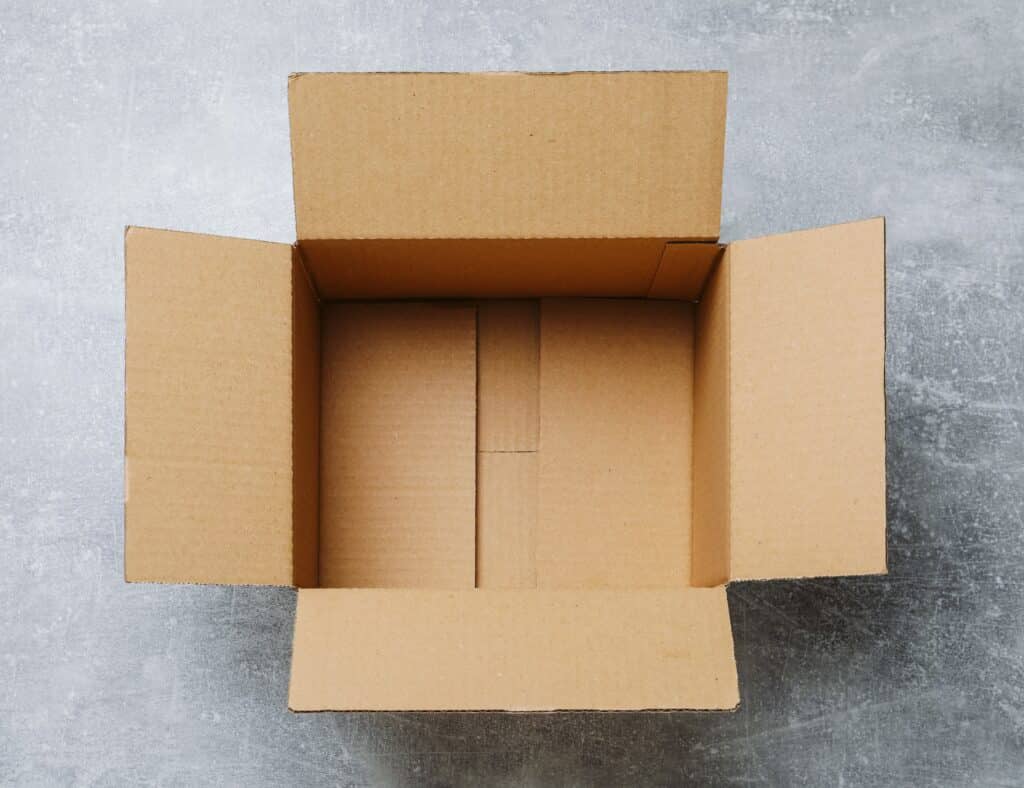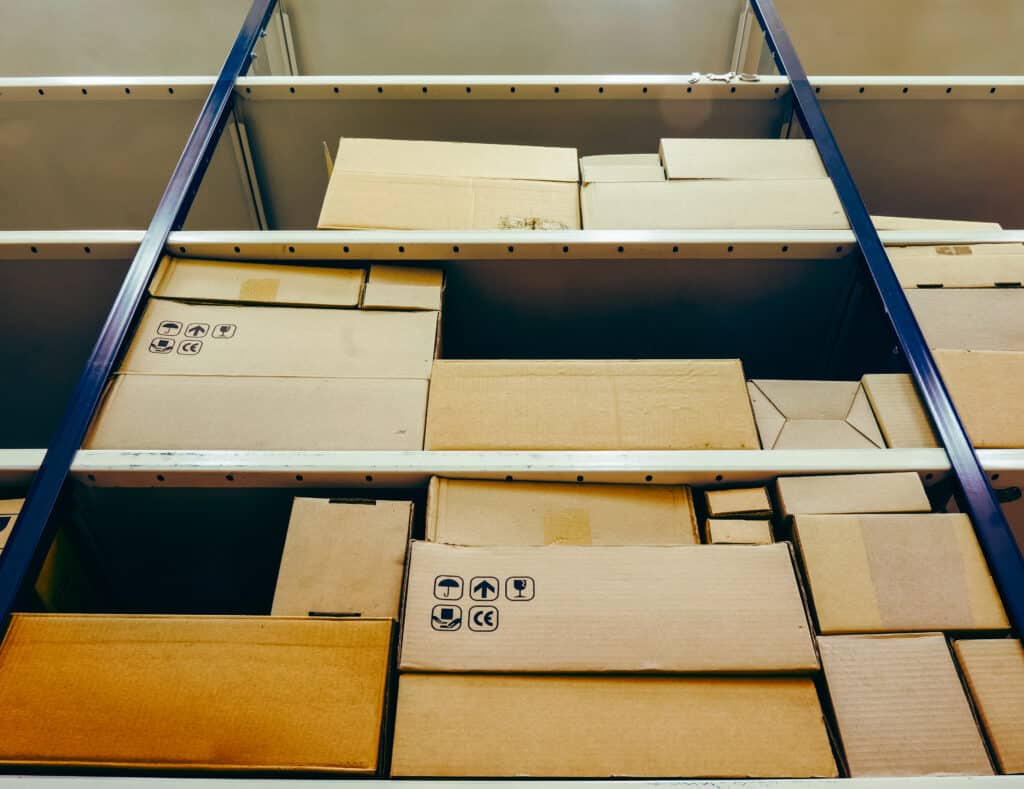Ecommerce, Warehousing • 9 Minute Read • Nov 21, 2023
Space Optimization Strategies for Ecommerce Warehouses

As a business owner with an ecommerce warehouse, you know efficient inventory management is important. When your warehouse is well-organized, creating, finding, and sending products is quick and easy. On the other hand, a disorganized warehouse wastes time, money, and erodes customer trust.
For business owners operating out of a home, making the most of the space is especially important. You’re organizing your life around your business. Keeping snow gear and holiday decorations from mingling with inventory is tricky when your basement is also an ecommerce warehouse.
Alleviating small warehouse woes starts with organizing your current space. Below are 7 space optimization strategies for your ecommerce warehouse.

Cluttered Spaces Impact Time, Revenue, and Day-to-Day Life
Organized inventory is essential for maintaining and growing an ecommerce business. If your space isn’t optimized for your products it negatively affects you and your customers.
As a business owner, a cluttered workspace negatively impacts your business and your mental health. According to the Harvard Business Review, our workspaces influence our well-being and productivity. Clutter increases anxiety, depression, stress, and reduces focus. Disorganization wastes time, increases errors, and creates unnecessary work.
Poor space management also impacts your customer experience. When products are listed as in stock (but aren’t) or arrive damaged or late, you’ll upset customers. Plus, it hurts your bottom line.
Small businesses operating out of homes are up against an extra challenge – less space. You have to fit day-to-day items and your business in your home. No matter what room you keep your inventory in, between bikes, board games, or workout equipment, it can feel overwhelming to impossible to keep your inventory organized.
Space Optimization for Small Businesses with Examples

Idea #1: Perform a Seasonal Clean
Sometimes your space problem isn’t about space. Consider routinely dedicating time to clean your warehouse and remove sitting inventory and clutter. Small businesses should regularly adjust what’s working, and what isn’t. Two rules to follow when cleaning up:
- Take stock of what you have and decide what you no longer need.
- Decide how you want to get rid of it.
A regular clean will also help you maintain quality control and avoid shipping damaged goods. Organize products by first in, first out. To get rid of old products, consider:
- Hosting a flash sale for a limited time.
- Sending clients a “surprise and delight” gift in the mail when they order something.
- Building your social following with old product giveaways.
When you inevitably run into your personal items, like the dumbbells you bought with the best intentions of using them at the beginning of the year, you can take them back to where they belong (or sell them on Facebook marketplace).
If you aren’t able to craftily sell or give products to your customers, consider your recycling options. There are a couple of ways to do this.
- Can your products be stripped down to their materials and the materials reused? This is a great way for ecommerce businesses to save money, make more space in their warehouse, and reduce landfill waste.
- Partner with another ecommerce company to move products. For example, if you make soap, is there another ecommerce shop that makes kid’s bath towels? The two of you could create a bath time basket which may sell better than your standalone products.
- Sign up for a program like Ridwell. They collect hard-to-recycle items and redistribute them to partners who reuse them.
If all else fails and you need to throw a product away, you can note it as wastage and send it to landfills.

Idea #2: Map Out Your Storage Space
New processes can be difficult to remember and maintain. Putting everything in a designated spot is harder under time crunches, or when other responsibilities pile up.
If you struggle to put things where they go, map out your storage space and commit to checking it each time you put something away. There’s no exact amount of time to establish a new habit, but committing to a month is a good start.
Designate a space for receiving any item that comes in, and put a copy of the map there. Don’t let items pile up anywhere else. Put your most popular products in a space that’s easy to access. Same with the materials you use most often.
This could save you hours over the course of a year!

Idea #3: Invest in an Inventory Management System
When you started your business, did you download a free app to manage the inventory in your ecommerce warehouse? If so, it may be time to take a hard look at the software you’re using and make an upgrade.
Free apps are often cluttered with ads, have slower run times, and only perform one or two functions. They’re free for a reason.
Investing in a paid app will give you a sleek and easy view of your inventory. Many of the paid inventory management systems also solve multiple problems – which streamlines multiple processes.
Look for an inventory management system that tracks inventory in real-time and forecasts demands. Here are five popular apps to explore:
Remember, your physical inventory is only as organized as your system.

Idea #4: Create a Space for Small Parts and Accessories
If your products include little pieces, create a space just for those parts and accessories. This keeps small items from ending up on the floor or squirreled away in random boxes where you can’t find them.
If a customer needs a replacement, you’ll be able to quickly ship the piece off – creating a great customer experience.

Idea #5: Simplify your Packaging
How many different ways do you have to ship products? Sometimes multiple boxes and mailers are unavoidable. Yet if you don’t have a specific need for each package, consider consolidating.
Take stock of your current shipping process. Could all small products be shipped in the same size box? Are small products often ordered with bigger products, so small boxes are rarely needed?
Mailers take up less space than boxes – does your business really need boxes?
Consider all the shipping options that are out there and see how small of a footprint you can give your packaging in your ecommerce warehouse. Hopefully, this will save you space, reduce clutter, and make your processes faster.
Depending on the changes you make, it could also save you money, too!

Idea #6: Go Vertical
Is your shelving pulling its weight? Check the spacing. If shelves are adjustable, reduce any dead space.
If you’ve been making bookshelves and boxes work up to this point, invest in ceiling-high storage shelving, or double-tier hanging racks. Rolling racks also make products more accessible. Pick shelving that can change over time with your business.
Also, keep a ladder near to taller shelving for quick access for hard-to-reach items.
The ceiling is the limit when it comes to your shelving!

Idea #7: Level Up and Invest in More Space
There is a point where every growing ecommerce business needs to move towards a more formal storage space. If you’re an entrepreneur who’s running low on elbow room despite space optimization, it may be time to invest.
Distribution centers are considered out of space when they hit 85% occupancy. This happens quickly in a business operating out of a home that already has all the necessary day-to-day life items.
There are a couple of things you’ll want in any new warehouse space.
- Flexibility in rent terms: Look for a space that offers long-term and short-term rental options. If you only need the space during the holidays or if you want to move your business to the space for good, the lease can fluctuate with your business.
- Optimized warehouse space: It should be easy to organize and grow your inventory.
- Ideal co-working space: A bonus to any extra warehouse space is that it can also act as a new office, too.
- Community: The people who supply the space and work around you should be interested in collaborating, embracing diversity, and creating a space for growth and belonging.
Keep in mind, at some point, you may be forced to consider an off-site move because your HOA doesn’t allow you to use your garage to store inventory. Or your spouse may just want to park their car in the garage again.
If you’re ready, there are a couple of options. You can get a storage space, a pod, a co-working space, or invest in a co-warehousing space.
Storage units can be a cost-effective option for your first leap from your home. Yet, you won’t work there, so it’s inconvenient to run back and forth.
Picture needing to double-check that a newly ordered item is in stock at 11am, right as you’re hitting your groove with other business tasks and have to pick up the kids on the opposite side of town in an hour. Not ideal.
Pods are another cost-friendly option. Yet, not everyone wants a giant container in their backyard or driveway that’s susceptible to pests, weather, or break-ins.
Co-working spaces are great for finding and creating community, which expands your business. It also separates your work from your home life. But, co-working space often doesn’t have warehouse space, so you may be dragging the same problems to a new workplace.
Co-warehousing spaces let ecommerce businesses store their products and provide a workspace. This storage option can provide climate-controlled areas, help separate your work from home, provide you with community, and grow with your business. Co-warehousing allows busy business owners to scale without stressing about inventory.
Don’t wait until you feel the walls closing in to make this switch – the more proactive you can be the easier it is to grow.
What is the Best Inventory Method for a Small Business?
The best inventory method for a small business depends on the business’s current and future needs. It may make sense to re-arrange your inventory at your home, re-do your shelving, or invest in a new space. The space you have in your home, HOA regulations, your family’s needs, and your business’s growth all play a role in your decision.
Imagine walking into your newly optimized ecommerce storage with everything where you expect it, allowing you to serve your customers better and expand your business efficiently. Meeting demand surges becomes a breeze, and instead of over-ordering, you purchase materials in bulk wisely and there’s a buffer for late shipments. All these factors contribute to saving money and growing your small ecommerce business.
Inventory is a lonely task, but being an ecommerce business owner without a community is even lonelier. We’re in your corner. Sign up for more ecommerce tips straight to your inbox.


